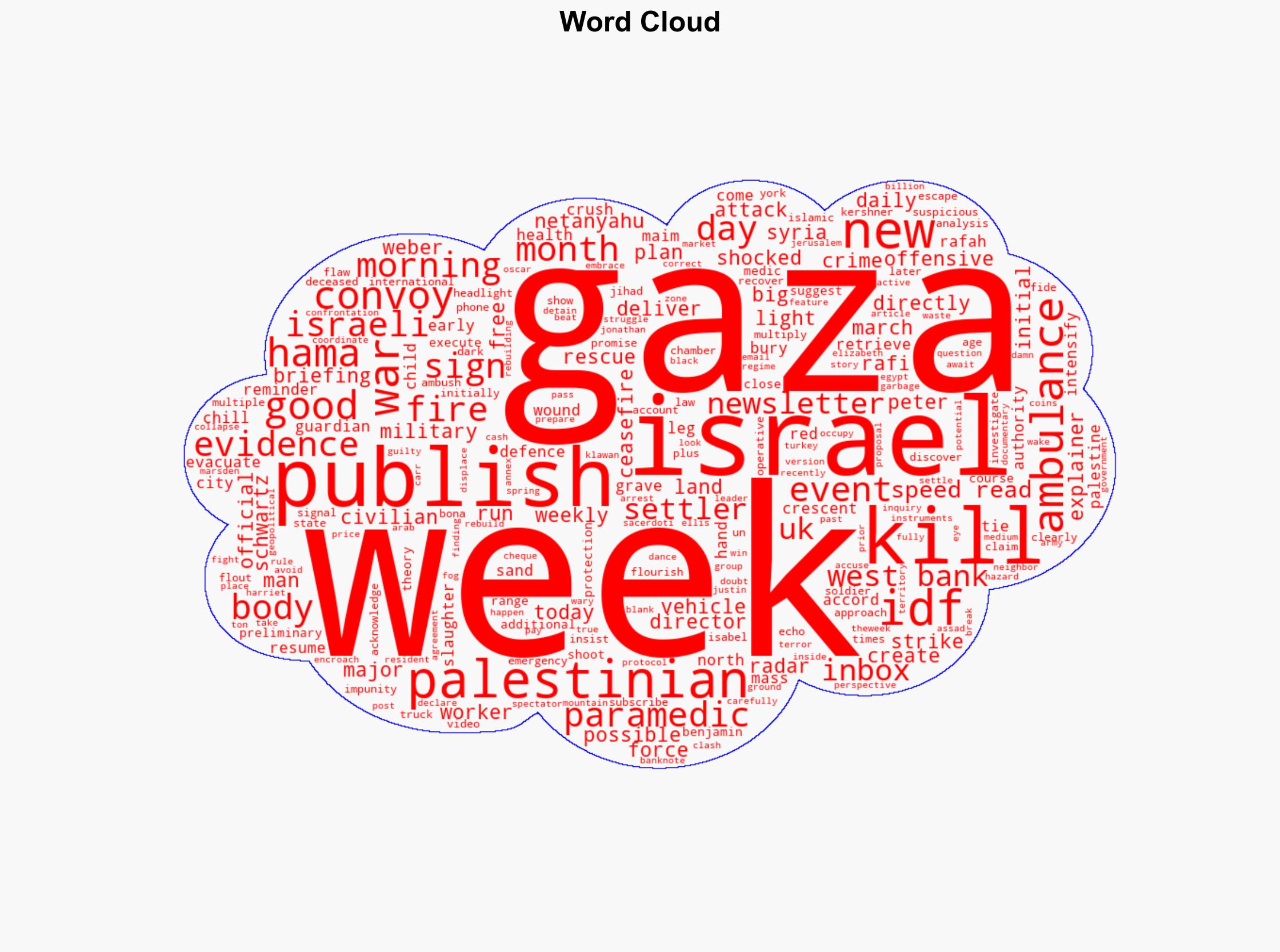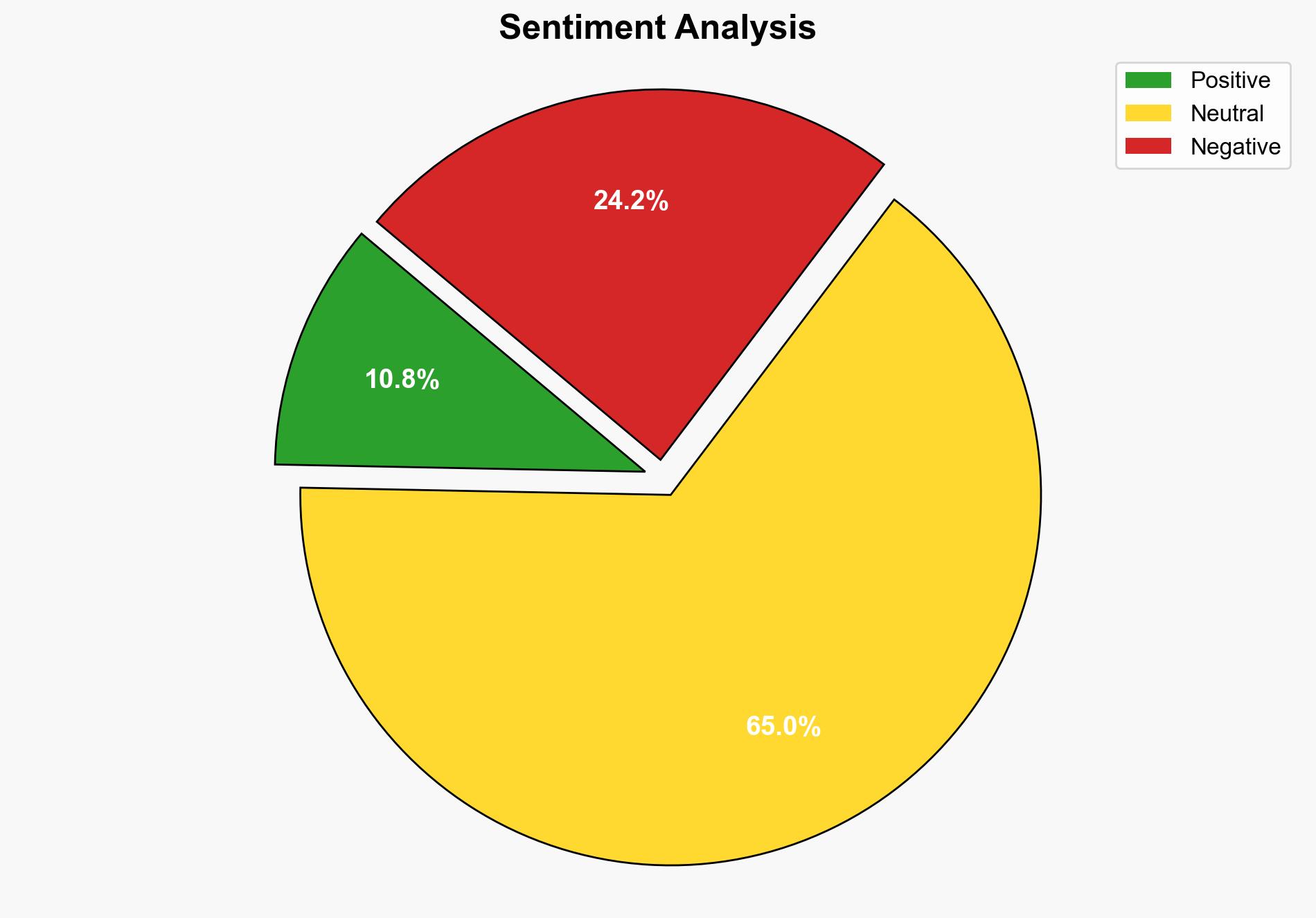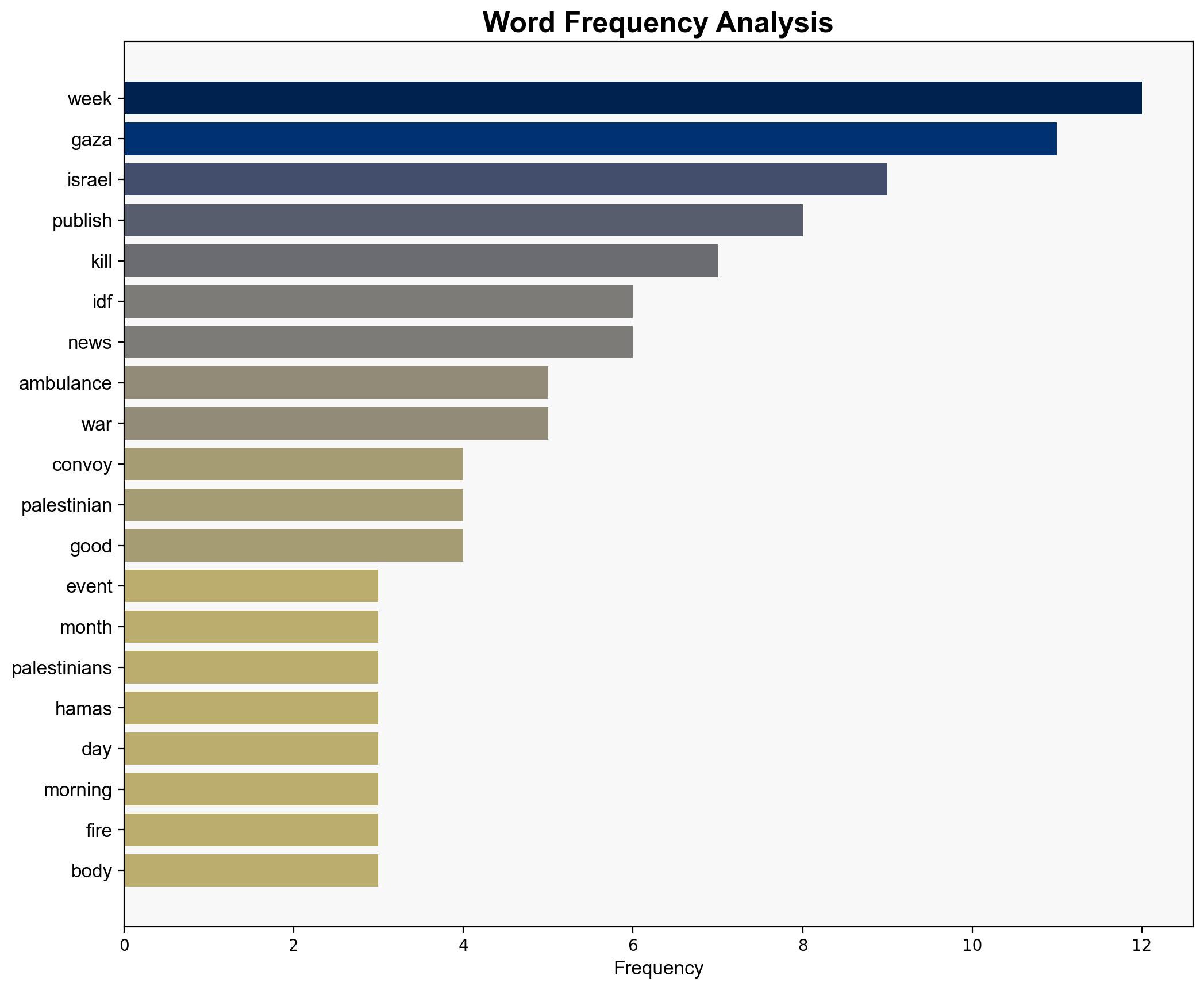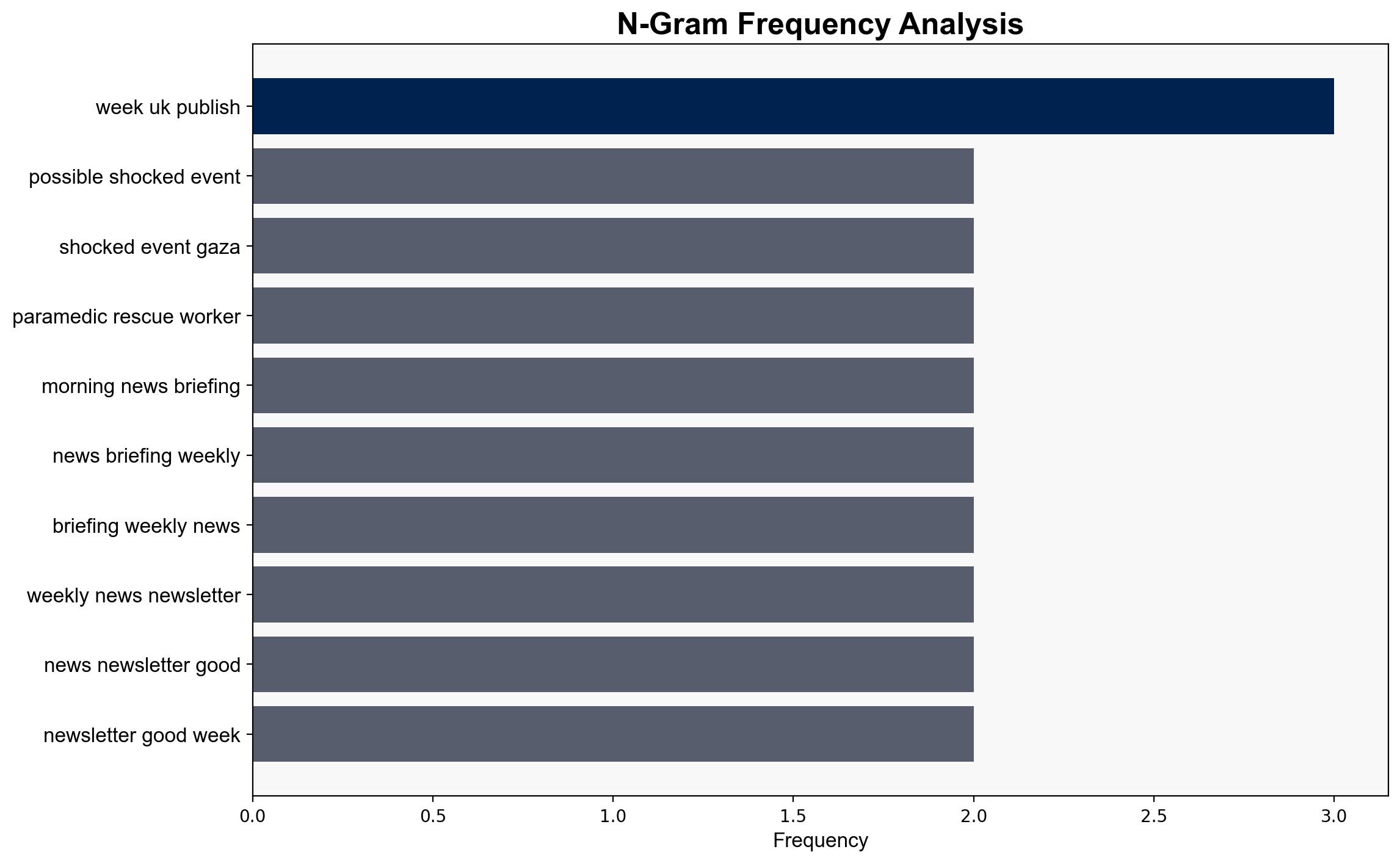Gaza the killing of the paramedics – The Week Magazine
Published on: 2025-04-12
Intelligence Report: Gaza the killing of the paramedics – The Week Magazine
1. BLUF (Bottom Line Up Front)
The recent incident involving the killing of 15 Palestinian paramedics and rescue workers by the IDF has escalated tensions in Gaza. The attack on an ambulance convoy, initially justified by claims of suspicious activity, has been contradicted by video evidence. This event highlights ongoing violations of international law and raises concerns about the protection of medical personnel in conflict zones. Immediate investigation and accountability measures are recommended to address potential war crimes and prevent further escalation.
2. Detailed Analysis
The following structured analytic techniques have been applied for this analysis:
General Analysis
The incident occurred on March 23, when a convoy of ambulances was targeted by IDF forces near Rafah. Initial claims by the IDF suggested the convoy was operating without proper signals, but evidence has since emerged showing the vehicles had their lights on. The discovery of bodies with signs of execution raises serious allegations of war crimes. The IDF’s acknowledgment of flaws in their initial report suggests potential internal miscommunication or misjudgment during operations. The broader context of ongoing conflict in Gaza, with over 50,800 Palestinians killed, underscores the volatility of the region.
3. Implications and Strategic Risks
The incident poses significant risks to regional stability and international relations. The targeting of medical personnel could lead to increased scrutiny and condemnation from international bodies, potentially resulting in sanctions or diplomatic fallout. The event may also embolden militant groups, exacerbating the cycle of violence. The risk of further civilian casualties remains high, with potential impacts on humanitarian efforts and regional security dynamics.
4. Recommendations and Outlook
Recommendations:
- Conduct an independent investigation into the incident to establish accountability and prevent future occurrences.
- Enhance communication and verification protocols for military operations in conflict zones to protect civilian and medical personnel.
- Engage in diplomatic efforts to de-escalate tensions and promote adherence to international humanitarian law.
Outlook:
In the best-case scenario, a transparent investigation leads to accountability and improved operational protocols, reducing future incidents. The worst-case scenario involves further escalation of violence and international condemnation, potentially leading to sanctions. The most likely outcome is continued tension with intermittent violence, necessitating ongoing diplomatic and humanitarian efforts.
5. Key Individuals and Entities
The report mentions Benjamin Netanyahu, Isabel Kershner, and Jonathan Sacerdoti. Key entities include the IDF, Hamas, and the Palestine Red Crescent.




